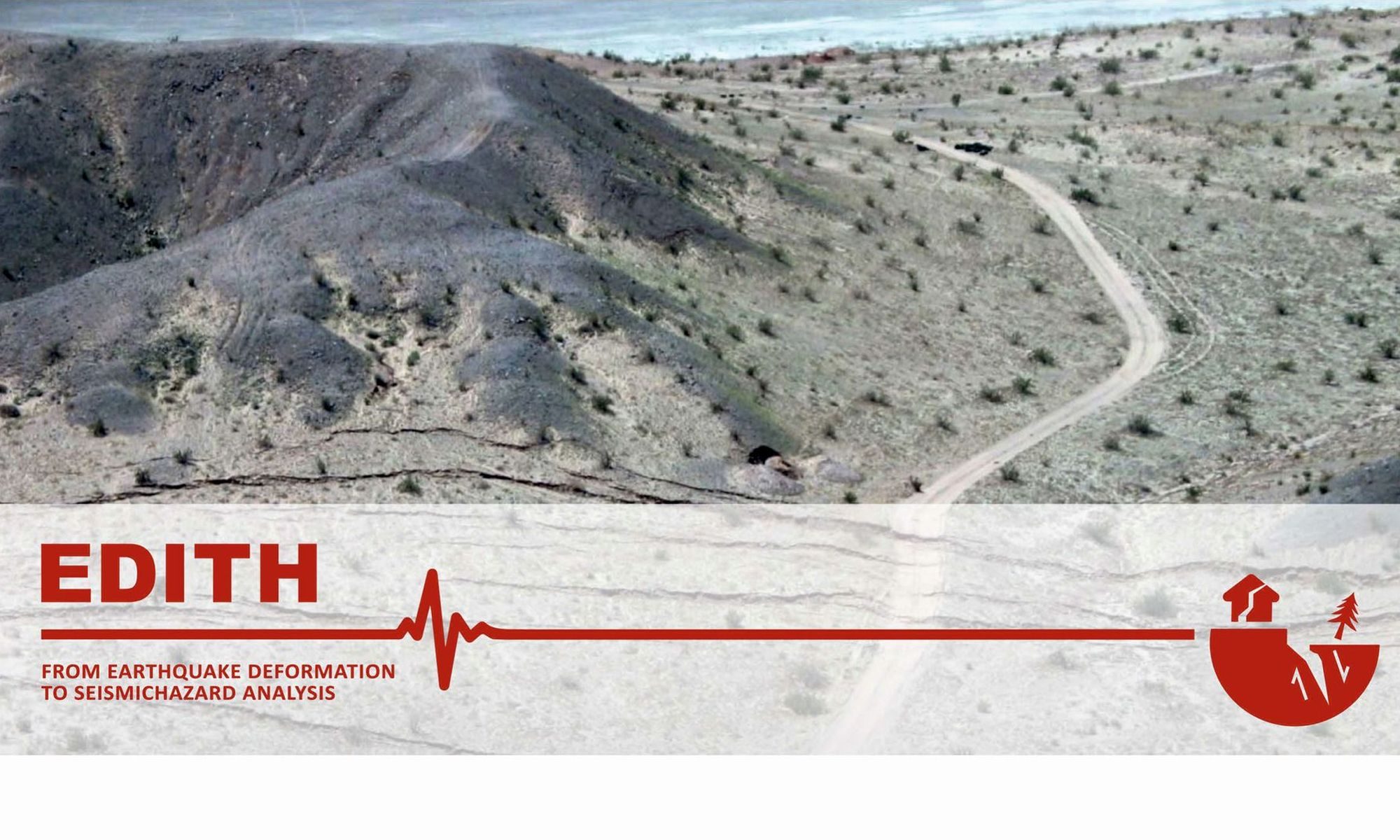In spring 2021 (14-16th April, 2021) the kick-off meeting of the EDITH project was held online, gathering over 80 participants from all over the globe, ranging from PhD Students, Early Career Researchers and Senior Scientists.
For a full description of the kickoff meeting plan and program, see the linked pages. A sum up of the meeting can also be read on Quaternary Perspectives, that covered our initiative in its Issue n. 30.
Keynote talks were given by eight invited speakers from across a range of career stages, institutions and backgrounds. Their talks introduced classical and innovative approaches to earthquake geology across four main themes, geodesy, paleoseismology, archaeoseismology and tectonic geomorphology. You can find the abstracts and recorded presentations on Youtube.
In the second part, we invited the participants to a collective brainstorming divided into thematic breakout rooms which focused on the following topics:
- Epistemic uncertainty;
- deciphering the seismic cycle;
- short vs long term time scales;
- geologic data for probabilistic seismic hazard assessment
- groundbreaking cooperations.
The discussions (each 60 minutes) were stimulating, and we came out of these sessions with a spectrum of ideas, including suggestions for Hot Topics, that were identified to be challenges that can be tackled by the EDITH community due to their interdisciplinary approach.
Therefore, we plan to keep the interest focused on Hot Topics identified by our community through:
-Workshops for ECS to share methodological background on upcoming and challenging methods related to the Hot Topics
-Thematic working groups aimed at discussing most recent advances in earthquake geology and proposing future collaborations
– Paper parties, discussing groundbreaking articles in earthquake geology or potentially linked research areas offering promising new interdisciplinary approaches.
The Key points from the breakout groups we use to define further action are:
Uncertainties
How to deal with increasing uncertainties that arise from the availability of high resolution topographic data and how to define the best signal to noise ratio, were the key topics discussed. Maybe Machine Learning (ML) methods can help us to find solutions. Therefore, we plan a training course on ML techniques to share available knowledge to tackle these challenges. Another issue that was touched was the methodology of trenching. Lots of uncertainties arise from this methodology since it is only point data which is often not reproducible.
Deciphering the seismic cycle
We identified a major knowledge gap in unraveling the seismic cycle, especially on slow moving intraplate faults. Can state of the art techniques like InSAR or LIDAR help us in identifying faults which are in the final stages of the seismic cycle? This is a topic that was identified as “Hot Topic” and we will dedicate a workshop on it to further advance collaboration and ideas. Furthermore, we discussed possibilities on how to identify creep in paleoseismological trenches. This would be a key for more complete hazard assessment.
Short vs. long term time scales
How to approach the discrepancies between geodetic and geological strain rates, was a major point of discussion. Furthermore, how distributed faulting in complex fault systems influences strain rate measurements is an important related topic to be discussed. Healing processes need to be taken into account as major factor in affecting fault behavior on different time scales. Therefore, collaboration with scientists form the rock mechanics community is desirable.
Geologic data for probabilistic seismic hazard assessment
Discussing strain maps from InSAR time series analysis we think they could be a major contribution, if we consider transients in strain. In fact, we noticed, that we are lacking experts from the field of PSHA and definitively need to initiate joint discussions with them.
Groundbreaking cooperations
Continuation of surface faults to depth is a widely needed input into our models, as well as the distribution of microseismicity. Therefore, probably not new or groundbreaking, but for sure extremely desirable is the collaboration with geophysicists. We need to promote our initiatives to our colleagues from this field. Application of machine learning techniques and Deep GIS is the hot topic, but we need to make sure that methodological developments are sound and integrating ground truthing. How this can be done will be a topic in the planned training course.
We think that the following actions are good choices to further perpetuate our initiative and stay in touch to discuss and learn about our exciting science:
- Community building: We plan to organize an informal meeting (a few hours long) during the next PATA days (France, 26-30 Sept 2022) and INQUA meeting (Rome, 16-20 July 2023). This will be our first opportunity to meet in person, to know each other, and discuss future networking.
- Online
activities: We plan one or
two scientific, online activities, for each incoming year:
- Short training courses on specific techniques (e.g., Using machine learning in the Earth sciences).
- Literature review on very recent advances of specific topics. This review will be followed by a round table discussion (e.g., slow-moving intraplate faults and how to face the related challenges).
Thank you again for the great Input and hope to see you soon! 😉
